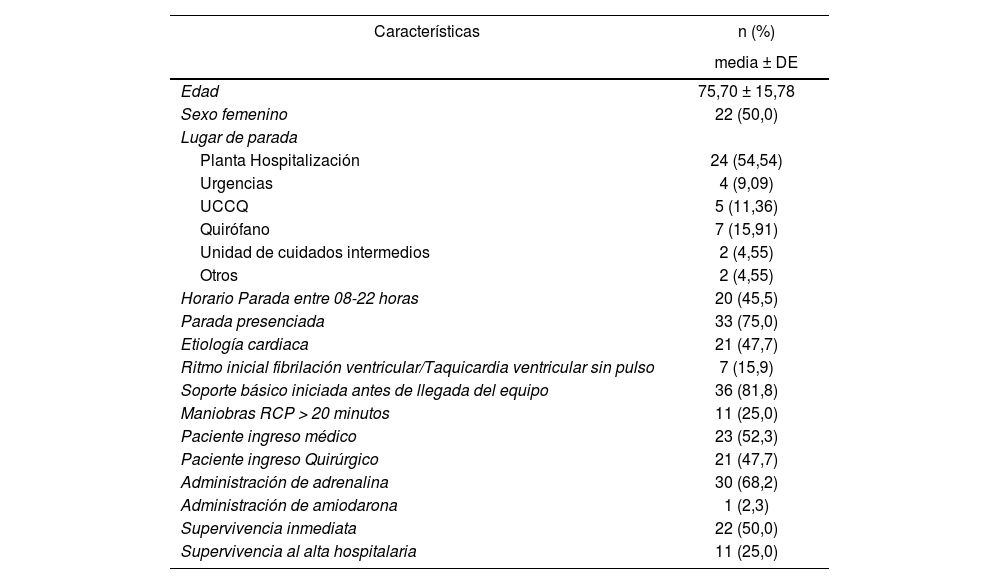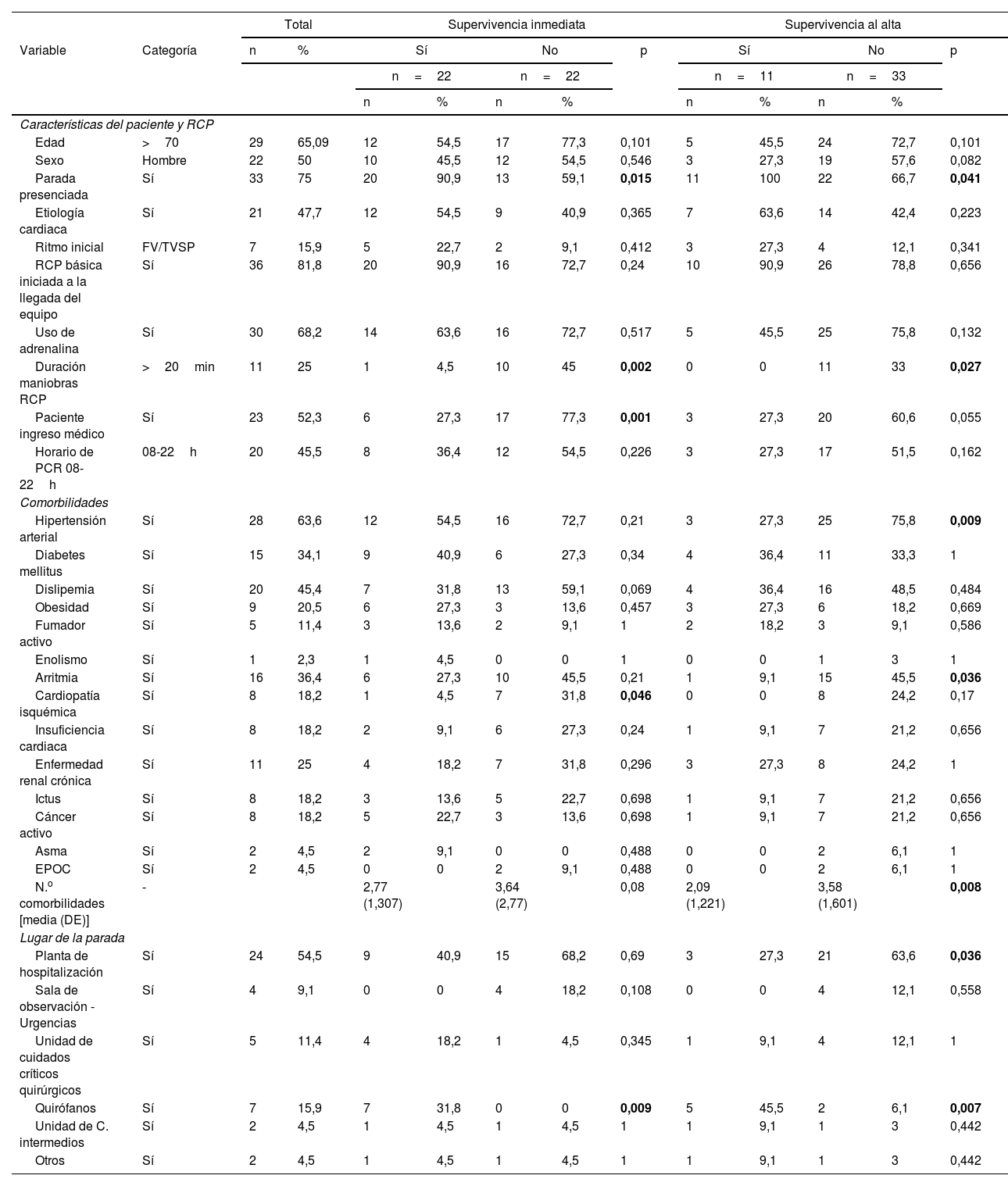La parada cardiorrespiratoria (PCR) intrahospitalaria es una entidad clínica con elevada morbimortalidad que presentan hasta el 2% de los pacientes ingresados. La PCR supone un importante problema de salud pública a nivel económico, social y sanitario, susceptible de revisión y mejora. El objetivo de este estudio es determinar su incidencia, la recuperación de la circulación espontánea (RCE) y la supervivencia en el Hospital de la Princesa, así como las características clínicas y demográficas de los pacientes que la sufren.
Material y métodosEstudio observacional, retrospectivo, descriptivo, de tipo registro de casos, durante un periodo de 12 meses, de pacientes por los que se avisó por PCR al equipo de intervención rápida (EIR) compuesto por el servicio de Anestesiología y Reanimación.
ResultadosUn total de 44 pacientes fueron incluidos en el estudio, de los cuales 22 (50%) eran mujeres. La edad media fue de 75,70 años (±15,78 años). La incidencia obtenida fue de 2,88 PCR por cada 100.000 ingresos hospitalarios; 22 (50%) pacientes consiguieron la RCE y 11 (25%) obtuvieron la supervivencia al alta hospitalaria. La comorbilidad más prevalente en los pacientes con PCR fue la hipertensión arterial (63,64%). No fueron presenciadas el 66,7% de las PCR y solo el 15,9% presentaron un ritmo desfibrilable.
ConclusionesLos resultados obtenidos son similares a los presentados en otros grandes estudios. Por esta razón, recomendamos implementar EIR y dedicar tiempo a la formación del personal hospitalario en torno a la PCR.
In-hospital cardiac arrest (CA) is a clinical entity with high morbidity and mortality that occurs in up to 2% of hospitalized patients. It is a public health problem with important economic, social, and medical repercussions, and as such its incidence needs to be reviewed and improved. The aim of this study was to determine the incidence of in-hospital CA, return of spontaneous circulation (ROSC), and survival rates at Hospital de la Princesa, and to define the clinical and demographic characteristics of patients with in-hospital CA.
Material and methodsRetrospective observational chart review of patients presenting in-hospital CA and treated by anaesthesiologists from the hospital's rapid intervention team. Data were collected over 1 year.
ResultsForty-four patients were included in the study, of which 22 (50%) were women. Mean age was 75.70 years (±15.78 years), and incidence of in-hospital CA was 2.88 per 100,000 hospital admissions. Twenty-two patients (50%) achieved ROSC and 11 patients (25%) survived until discharge home. The most prevalent comorbidity was arterial hypertension (63.64%); 66.7% of cases were not witnessed, and only 15.9% presented a shockable rhythm.
ConclusionsThese results are similar to those reported in other larger studies. We recommend introducing immediate intervention teams and devoting time to training hospital staff in in-hospital CA.













